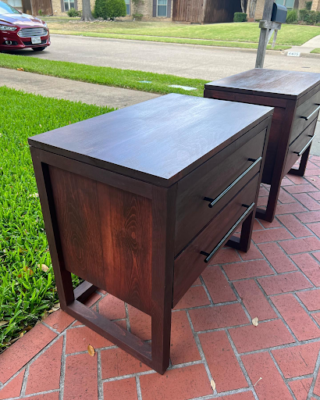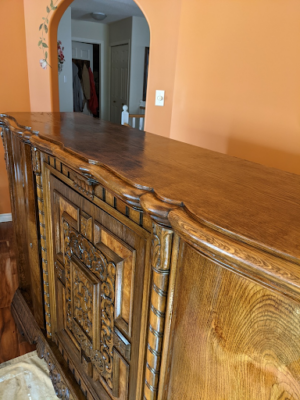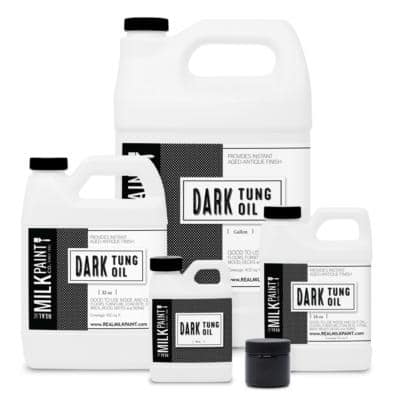When you need solutions for protecting wood, including both previously oiled wood and bare wood, the first two finishing oils you’re likely to encounter in your search are tung oil vs linseed oil. Both raw linseed oil and pure tung oil are naturally derived oils often used to finish woodworking crafts, wood furniture, wood floors and exterior wood surfaces like decks and porch railings.
Classified as drying oils, tung oil and linseed oil alike cure by exposure to oxygen — rather than via evaporation — for a penetrating finish that’s smooth and unsticky to the touch. Despite these similarities, there are differences between these oils along with very good reasons to choose one over the other.
The Origin of Tung Oil and Linseed Oil
 Though tung oil and linseed oil are natural finishing oil options, their origins are very different. They do, however, both come from plants: tung oil is pressed from the seeds within the nut of the tung tree, and linseed oil comes from ripe flax seeds.
Though tung oil and linseed oil are natural finishing oil options, their origins are very different. They do, however, both come from plants: tung oil is pressed from the seeds within the nut of the tung tree, and linseed oil comes from ripe flax seeds.
Also known as chinawood oil, tung oil was used during the Song Dynasty to waterproof Chinese ships. The culture further used this versatile finish on interior and exterior wood products ranging from paper parasols and inks to paints and caulking. Tung oil can be processed in a number of ways, most pure tung oils are cold-pressed and some tung oils which are considered “polymerized” go through a heat treatment.
Like tung oil, linseed oil has an ancient history — but one with even more versatile uses than the former. Used for food as flax and flaxseed oil, this finishing oil can be found in numerous everyday products, including as an ingredient for oil-based paints and in its fabric form, linen. Where products like pure tung oil are all-natural, however, most boiled linseed oil furniture finish products typically include metallic agents that speed up the drying times.
Pros and Cons of Tung Oil and Linseed Oil
Comparing pure tung oil and regular linseed oil is always hard, as both have advantages and disadvantages. These pros and cons are listed under the properties and characteristics important to those who finish raw wood and restore already-finished pieces.
 Drying Time
Drying Time
Tung oil, such as Pure Tung Oil by the Real Milk Paint Co., dries just like regular linseed oil via evaporation. Curing times for tung oils typically range from seven days for light use to 30 days for regular use. By comparison, the time for raw linseed oil to dry completely ranges from a few weeks to a couple of months.
This lengthy drying time explains why most linseed oils are boiled. Don’t let that word boiled fool you, though. Before mass manufacturing, linseed oil was actually boiled to help it dry faster. Now, creating boiled linseed oil or polymerized linseed oil isn’t technically a heating process. To create raw linseed oil, metallic drying agents are added to the mixture that let the finished product cure within a day, without having to add numerous thin coats that must be completely dry before adding more.
Our Pure Tung Oil offers more environmentally friendly characteristics, including a formulation that uses only tung oil with absolutely no additives or metallic drying agents. The best condition to help our tung oil cure completely within a slightly faster time frame is warm and well ventilated. For better penetrating wood, thin them down with mineral spirits or a natural citrus solvent, such as our Orange Oil Natural Citrus Solvent.
For added convenience, the Real Milk Paint offers Half & Half products with premixed oil and solvent. These all-natural, environmentally friendly formulations combine tung oil in its purest form with our citrus solvent for a finishing oil you can use straight from the bottle.
 Color and Finish
Color and Finish
A pure tung oil finish has a honey-like color that brings out the natural beauty in your wood grain, while linseed oil starts out with a similar slightly yellow hue that fades to a darker orangey finish over time. This potential for color change makes our tung oil products a better solution when you require projects to retain their original look. In terms of finish properties, tung oil dries to a flexible and low luster finish that resembles plastic, while linseed oil features a softer oil finish with a touch of sheen.
If you want a deeper hue for raw wood projects like wood bowls, cutting boards and butcher blocks, consider our Dark Tung Oil and Dark Half products. These finishing oil options offer a richer finish than the honey hue of our Pure Tung Oil thanks to the inclusion of a food contact safe all-natural resin for a deep look that enhances your wood grain.
Durability and Safety
 For outdoor projects, tung oil offers better protection than raw linseed oil, even in its purest form. When combined with other ingredients like pine oil and zinc in our Outdoor Defense Oil, this protection extends even further — all while remaining food safe like our other tung oil products. This non-toxicity also makes tung oil finishes ideal for homes with kids and pets.
For outdoor projects, tung oil offers better protection than raw linseed oil, even in its purest form. When combined with other ingredients like pine oil and zinc in our Outdoor Defense Oil, this protection extends even further — all while remaining food safe like our other tung oil products. This non-toxicity also makes tung oil finishes ideal for homes with kids and pets.
Another major benefit that tung oil has over straight linseed oil is that tung oil provides water resistance, whereas linseed oil doesn’t without a lot of effort. Because of this, tung oil is ideal for applications like handmade wood bowls, plates, butcher blocks and cutting boards — plus any other food-related items that require regular washing.
Likewise, tung oils resist mold and mildew growth better than boiled linseed oil. In fact, a polymerized linseed oil finish is often prone to mold and mildew, requiring frequent cleaning and maintenance. Further, a wood linseed oil finish with boiled linseed oil isn’t food safe, and even polymerized linseed oil and straight linseed oil may have issues with contaminants if you don’t purchase food-safe options.
 Ease of Use
Ease of Use
Tung oil has boiled linseed oil and polymerized linseed oil alike beat when it comes to ease of use. While you can use straight linseed oil on your wood furniture projects and you have to mix tung oil with a solvent for improved penetration, this is a small price to pay. Pure tung oil requires only application with a brush, roller, or rag with roughly 40 minutes of time between coats to allow the oil to absorb. After multiple absorbed coats and when the surface won’t hold more, simply wipe away the excess oil and let your project cure.
Raw linseed oil, however, requires multiple thin coats with a drying time significantly higher than with tung oil. Using boiled linseed oil or polymerized linseed oil speeds up the process significantly, but since those products typically have drying agents and additives, you need more ventilation space when using them to finish wood furniture.
Sanding Over Both Oils
Sanding isn’t really needed between coats of either regular linseed oil or pure tung oil. This is an important distinction between pure tung oil and tung oil finishes as tung oil finishes require sanding between coats. If the surface feels rougher than you’d like, you can typically sand before oiling or after the first coat. One key to great results is to not sand the raw wood too fine before oiling it. Sanding with 100- to 220-grit sandpaper before oiling the surface is recommended if the wood has issues, but sanding with very fine-grit sandpaper can close off the wood grain and cause problems with your finished product.
Tung and linseed oil are both popular for a number of reasons, including that they’re both environmentally friendly (raw linseed oil, aka flaxseed oil, anyway), plant-based finishes and contain no VOCs. Tung oil offers a number of advantages over linseed oil, including a food-safe, water-resistant finish that’s not prone to mold and a beautiful matte amber color that doesn’t darken over time.
The Best Tung Oil Finish at Real Milk Paint
For your next project, give Pure Tung Oil products by the Real Milk Paint Co. a try. See for yourself the advantages they have to offer, and find out how our other environmentally friendly products such as non-toxic paints or wood waxes can benefit your home, your hobbies and your unique creations.





